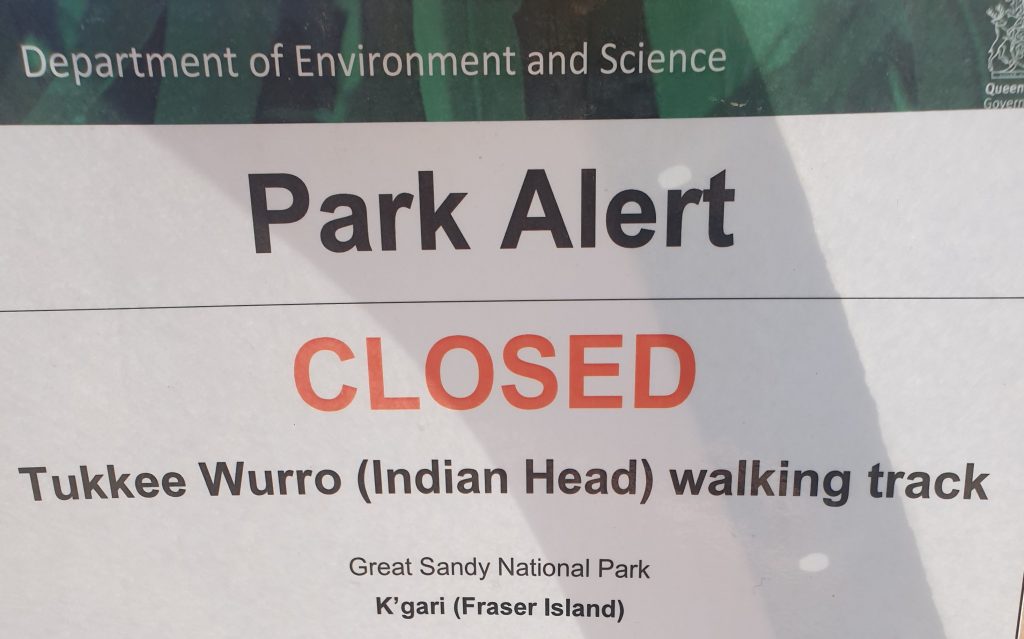Indian Head is a popular spot with a spectacular view
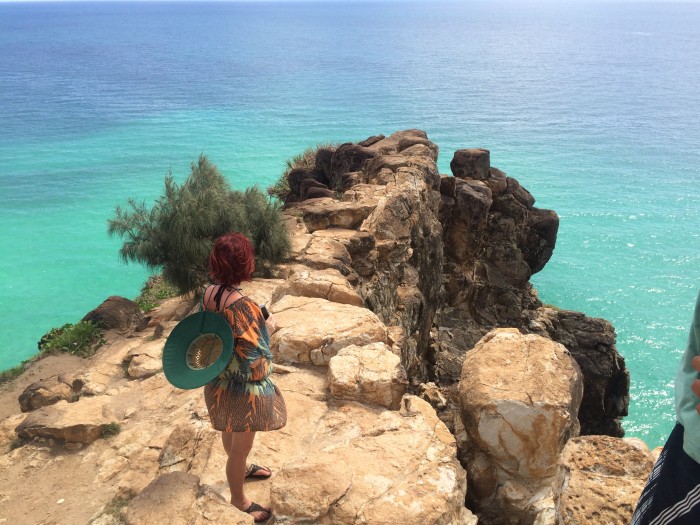
Visitors to Fraser Island are always amazed at the magnificent view at the top of the cliffs at Indian Head.
Many are surprised at just how much marine life you can see from the 50meter cliffs below.
Turtles, stingrays and sharks are seen daily and from August to November Humpback whales frolic around the headland.
Where Is Indian Head On Fraser Island?
Indian head is on the eastern side of Fraser Island. It is at the northern end of 75 mile beach.
You cant miss it if you keep driving north past Eli Creek and the Maheno shipwreck.
The rocky headland actually looks like a native Indian headdress with trees scattered on top like feathers.
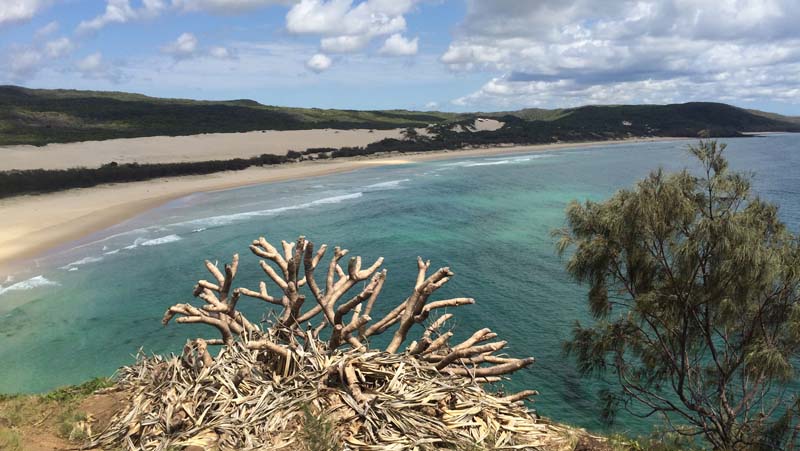
What Is The Attraction To Indian Head?
Indian head is a popular attraction with the tourists. Queues of vehicles and tourist buses unload their passengers on the beach to make the trek up to the top of the headland.
The view is spectacular from the top with massive cliffs dropping down onto the rocks and ocean below and on the western side a beautiful view out to Middle beach and the sand dunes in the distance.
Driving The Jump Up Track
Climb Indian Head Lookout
You can only access the walking track from the southern end on the eastern beach side.
As it is a popular tourist spot you will find many vehicles and tour buses lined up on the beach unloading passengers that are eager to walk the track to the top.
What To Expect Climbing the Lookout?
It is a bit of a trek to the top of the cliff with some steep and rocky tracks to follow.
The walk takes about 20 minutes for a person with average fitness. It is steep and rocky in some parts and a few little breather stops may be needed to catch your breath.
A great walk in winter to warm you up and perfect in summer to sweat and burn a few calories.
Access to the walking track is from the eastern side only. From the beach the walk begins with rock climbing over large boulders as you follow a narrow little goat track.
Some parts are quite slippery and in the summertime the dirt and rocks can get extremely hot.

Tourists climbing up the Indian Head track up the rocks
What To Take On The Walk To The Top?
If you are going to take the walk to the lookout, you might want to carry some basics.
- a water bottle
- a camera
- a hat ( especially in the summertime ).
- suitable footwear
If you are taking the kids on the walk you may find yourself carrying them part way.
We did with ours when they were little.
Is It Dangerous To Climb Indian Head?
The walk to the top is not dangerous, however danger is possible if you get too close to the edge of the cliffs and slip or fall.
Be aware of the WARNING SIGNS as they are for your safety.
It can be a little difficult to navigate the rocks if you have a pre existing injury.
If you are taking young children it is advisable to hold hands and keep a close watch from the top.
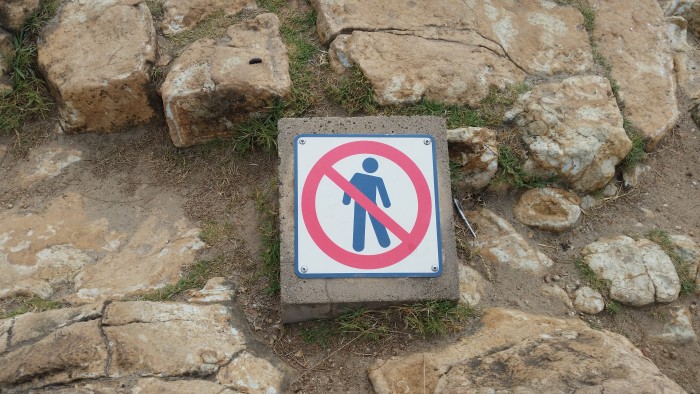
Be Careful At The Top – Dangerous Cliffs
Once you reach the top of Indian Head you will notice a few different warning signs.
Please take note of these as they are extremely important in ensuring your safety and that of others especially children.
- On windy days it can be very dangerous to stand close to the edge of the cliffs…take note of the warning signs.
- Keep well back from the edge when taking photos.
- Selfies can be particularly dangerous if you lose your footing and slip or trip
- Ensure that young children are supervised at all times
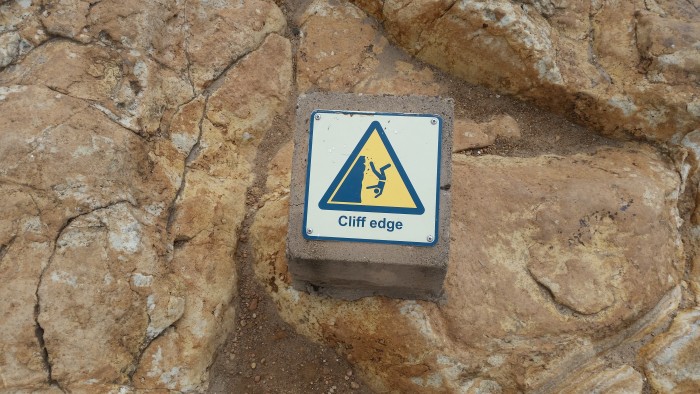
How Did Indian Head Get Its Name?
Many visitors to Fraser Island presume that Indian Head got its name because it actually looks like a native American Indian headdress.
The high rocky cliffs form the head shape and the scattered trees resemble the feathers adorning the headpiece.
You could actually imagine a native American Chief wearing this. It is remarkable, yet not the reason headland got its name.
Indian Head was named by the explorer Captain James Cook on 19 May, 1770.
As he sailed past the headland he noticed through his binoculars a tribe of dark skinned natives standing on the rocky cliffs.
He used the term” Indian” in reference to native American Indians to describe the indigenous aboriginals that he saw.
The natives he was referring to was from the Butchulla tribe. They are now recognised as the traditional owners of Fraser Island or K’Gari as they call it meaning paradise.

What Can You See From Atop Indian Head?
Spectacular views is what you get. At the top you can see clearly down into the waters below.
It is common to see turtles and Manta ray, large ocean fish like Mackerel and Tuna, pods of dolphins and often hammerhead sharks lurking through the waves.
The view out into the ocean on the horizon is amazing.
During whale watching season it is even more spectacular when you see pods of whales breaching and playing in the water.
ADVERTISEMENT
ADVERTISEMENT
